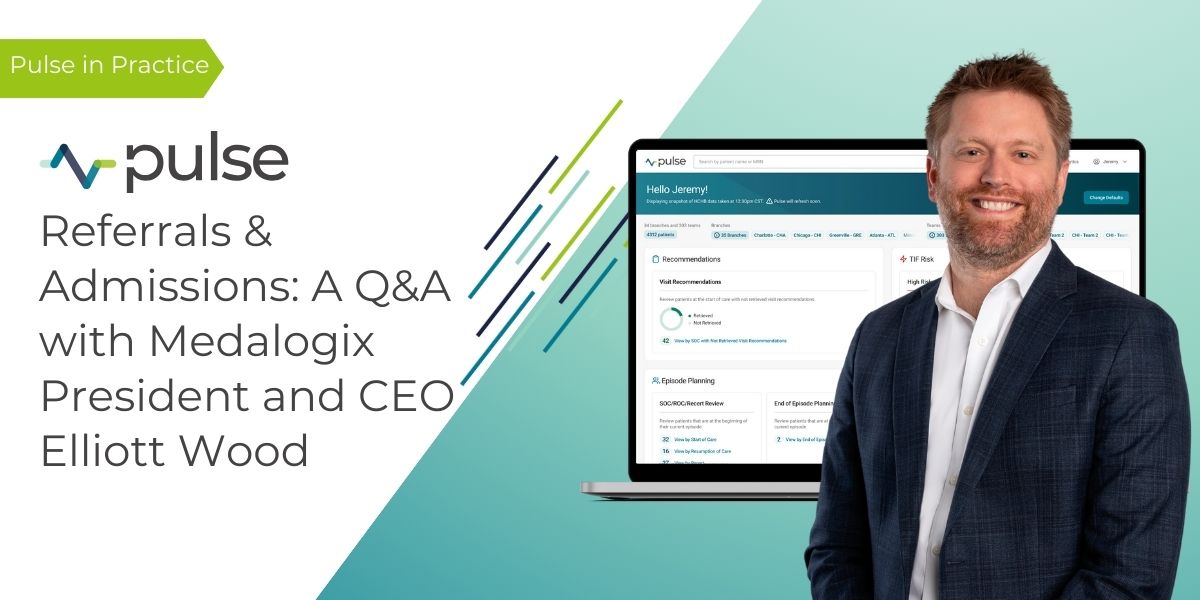Video: How Appropriate Hospice Care Helps Reduce Avoidable Hospital Readmissions
As the healthcare system shifts to value-based care, it’s more important than ever to understand the relationship between appropriate hospice care and reduced readmissions. And, how to improve end-of-life care quality while reducing readmissions. This short video will tell you everything you need to know.
This is the first time in the history of Medicare that HHS has set explicit goals for
alternative payment models and value-based payments.How does this affect providers? Well, the primary risk to home health providersengaged in partnerships with acute care providers or large health systems isreadmission. Since it’s a huge set back in patient care, it’s a huge setback tohome health providers’ bottom line.
Interestingly enough, hospital readmission and appropriate hospice care areoften linked. According to a recent study, 77 percent of patients seen in the ER inthe last month of life were admitted to the hospital, and 68 percent of those whowere admitted died there. Increased frequency in the emergency department isa big red flag. In contrast, patients who enroll in hospice at least one monthbefore death rarely visited the ER during that period.
So, if home health providers could appropriately identify and inform hospiceappropriate patients, patients could receive a better quality of life at the end of lifeand avoid costly and frustrating hospital readmissions.
Great! We’ve solved a big part of the challenge. Well, not so fast.
Earlier, more accurate identification is only half the solution.The way to truly improve patient care and win in a value based care system isthrough coordinated care.
According to the Agency for Healthcare Research and Quality, care coordination
strives to meet patients’ needs and preferences by identifying patients’ needsahead of time and communicating those needs to the right people at the righttime to provide safe, appropriate and effective care.
Most home health agencies don’t have a way to properly identify and informhospice patients.
So, here’s the opportunity.
Let’s equip these home health agencies with a way to properly identify, inform
and transfer these patients who would benefit from hospice. (Our homecare and hospice solution,Medalogix Bridge, can do this.)
It’s a win, win win.
The home health agencies win because they ensure the right patients are in theright care setting at the right time, which helps reduce readmissions and improvequality care—and that matters in a quality-based healthcare system.
The hospice providers win because they’re able to care for more patients whilefulfilling their mission of ensuring patients nearing the end of their lives, truly livetheir final days.And most importantly, patients win because care quality drastically improves.
Patients now get to live their final days enjoying the emotional, physical andspiritual benefits of hospice care, surrounded by family and loved ones.
Together we can improve patient care like never before and thrive in the value-based healthcare landscape.
Related Blogs

Unlocking Efficiency and Precision in Home Health Documentation
Home health teams operate in diverse and uncontrolled settings, ranging ...

Pulse Referrals & Admissions: A Q&A with Medalogix President and CEO Elliott Wood
With our new Referrals & Admissions module now available for purchas...

Transforming End-of-Life Care with Medalogix Muse at St. Croix Hospice
St. Croix Hospice, a nationally acclaimed hospice agency, has leveraged ...


